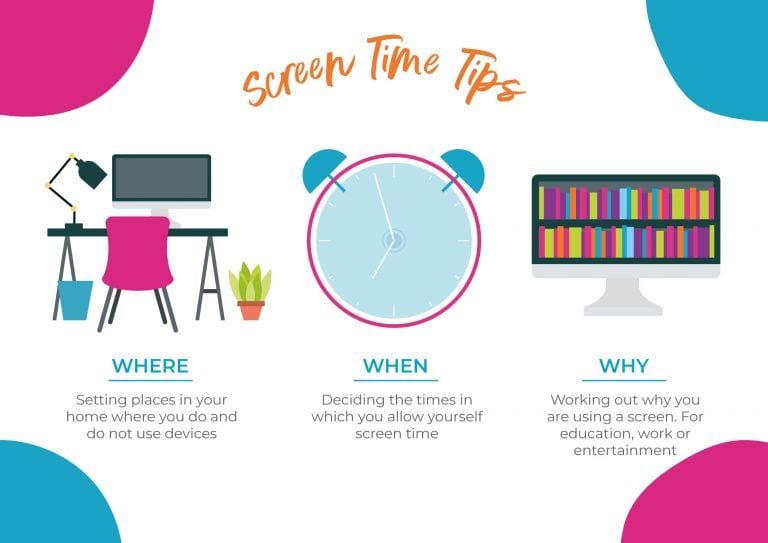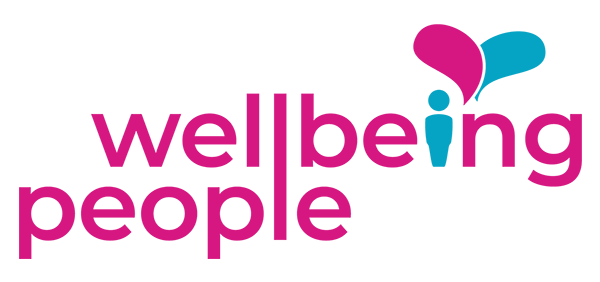Digital wellbeing is quite a complex subject. Defining what is right and what is wrong in digital wellbeing, is not that straightforward as digital technology brings both positive and negative outcomes to our overall wellbeing.
Digital wellbeing is a term used to describe the impact that technologies and digital services have on our physical, mental and emotional wellbeing. On an individual level, it is the state of personal wellbeing one experiences through the use of electronic tools, systems, devices and resources.
Technology is ever more integral to the things that we do
Overuse of screens and handheld devices, and the expectation that we need to be available 24 hours a day, not only impacts our physical health, resulting in medical issues such as digital eye strain, headaches and fatigue but it also affects our mental health with an increased risk of conditions such as depression, low self-esteem and anxiety. Our emotional wellbeing is impacted too as it distracts us from the things that matter most to us.
Promoting a healthy use of technology will proactively help you to maintain positive mental, physical and emotional wellbeing. Below are just some of the things to be aware of and how you can overcome some of the issues caused by the use of technology.
8 ways to achieve your personal sense of digital wellbeing
1. Take a look at your digital habits
Creating new habits can feel daunting but taking small steps and adjusting to a new way of using your digital devices will help you to be happier and more present. Ask yourself some questions: How do your digital devices make you feel? Do you sometimes feel overwhelmed with too much information or feel pressured or stressed by social media or messages? Maybe you get anxious if you forget your mobile phone when going out. If your digital device is causing you negative feelings, then it’s most probably time to look at how you can improve your digital wellbeing!
2. Monitor your digital activity
The first step towards improving your digital wellbeing is to get a detailed understanding of your tech use. It is really important to be aware of how much time you spend using digital devices and how you interact with them. Most smartphones now have the ability to monitor your activity so you can analyse the time you spend on each app and digital device.
3. Set the boundaries
We are surrounded by digital devices. We live in a world of tech! However, we are failing to set healthy tech boundaries. You can set daily limits on the apps and websites you use. Once you hit the limit, the apps and sites pause and notifications are silenced.

4. Bedtime curfew
Disconnect your phone or devices to help you get a better night’s sleep. There are various apps that will put your phone in nighttime mode, silence your notifications and turn your screen to grayscale which minimises blue light. Exposing ourselves to artificial blue light at bedtime disrupts our natural sleep-wake cycle as it blocks the hormone melatonin which helps us to fall asleep.
5. Gadget free meal time
Throughout the years, sitting down with the family or your loved ones for an evening meal was the time for busy families and friends to come together, relax and chat about their day at school or work. In current times, research shows that mobile phones and electronic gadgets have become part of the family meal resulting in silent meals with little or no communication. Psychologist and behavioural expert Emma Kenny said “Making sure that mealtimes are a technology-free zone is critical to family cohesion and means that every family member can be fully present whilst enjoying a nutritious and delicious shared meal.”
6. Focus mode
It is all too easy to get distracted by app notifications! There are options on some mobile phones to temporarily pause apps. This will prevent your phone from disturbing you when you need to focus on something important. If you try to open an app whilst in focus mode, it will remind you that the app is paused!
Workplace Wellbeing
Narrow the search for your next wellbeing initiative and discover the Wellbeing People approach to workplace wellbeing.
7. Prioritise real-time relationships
There is a term ‘phubbing’ which means ignoring your friends or family in favour of looking at your phone. Research shows that ‘phubbing’ robs us of our fundamental needs and can seriously affect our relationships and increase stress levels! Phubbed people can feel excluded, unwanted and ignored – not a great basis for a healthy relationship!
Try establishing some unplugged zones in your home! Give your family and loved ones the chance to talk and listen without any distractions. Try turning your phone off completely, rather than on silent, as this will ensure it doesn’t vibrate! If you really can’t do without digital devices, then you could try playing electronic games together, or watching TV together – sharing activities brings a greater sense of attachment and connection.
8. Social media
Social media plays a large part in how we interact and communicate with others which can be a hugely positive thing as it keeps us connected to friends and family. It is also a great source of information. Studies show that overuse of social media (known as social media addiction) and continually communicating electronically with our friends and family, instead of face-to-face can cause depression, feelings of loneliness and social isolation. Heavy use of social media can also promote negative experiences, such as feelings of inadequacy about our appearance and how we live our lives.
Taking a digital detox by spending time away from social media is one of the best things you can do to help stop the addiction. You will realise how much time you have to do other things. Try taking up non-screen based activities such as new or old hobbies, meeting and seeing friends face-to-face.
10. Digital ground rules
Setting up digital ground rules is vital to ensure your children’s digital wellbeing is looked after. Most digital devices enable parents to set up parental control. This means they can protect themselves from inappropriate content, online purchases, the apps they use and the time spent on their devices.
Take care of your digital self, so that your real self can thrive - Alexandra Samuel
Smart use of technology makes sense!
Technology is a part of our lives whether we like it or not and overuse negatively impacts our wellbeing. However, technology also offers many positive benefits and plays an important role in education and in our health and wellbeing. Following the simple steps above can help you to identify the positive and negative aspects of technology. Meaning that you can enjoy your life knowing that you are taking care of your own sense of digital wellbeing.
Further reading and research
Upgrade your habits to good ones!
Transform your wellbeing with a transformational online wellbeing programme
